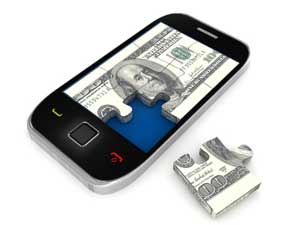By Doug Stephens
If you own a credit card, it’s entirely possible that you’ve run into situations where your card won’t work. Maybe your credit limit was exceeded, your mag stripe lost its mojo or maybe the entire payment network was just temporarily down. Whatever the case, they’re not pleasant situations but can usually be overcome with some other method of payment – cash, debit, or another credit card perhaps.
What you’ve never had to worry about is dealing with a credit card with a dead battery. But that’s precisely what could happen in a world where all payment methods are contained on your mobile devices. When you need it most, you may simply not have power. Imagine travelling and running out of juice, just as you need to buy a ticket for a departing train. Or having your phone die just as your bill is presented to you in the restaurant.
The recent introduction of the iPhone 4S brings this potential problem to the foreground, with users complaining of as little as 5 hours of battery life. And plugging in isn’t always possible when you’re on the go.
It’s a problem that will need to be solved and there are several possible ways. Either device manufacturers will need to extend battery lives considerably or users will have to carry backup power supplies.
There is also a potential third solution in the form of inductive charging zones, which would enable wireless re-charging of mobile devices either on or in the proximity of a charging station built into various surfaces. In other words, surfaces in restaurants, on trains, airplanes and anywhere that people are on the go, will be equipped with inductive charging technology, keeping devices charging while idle.
As we struggle to get our heads around the significant issues of privacy, security and banking infrastructure that mobile wallet presents, what could ultimately undermine its speed of adoption may come down to simple battery life.

